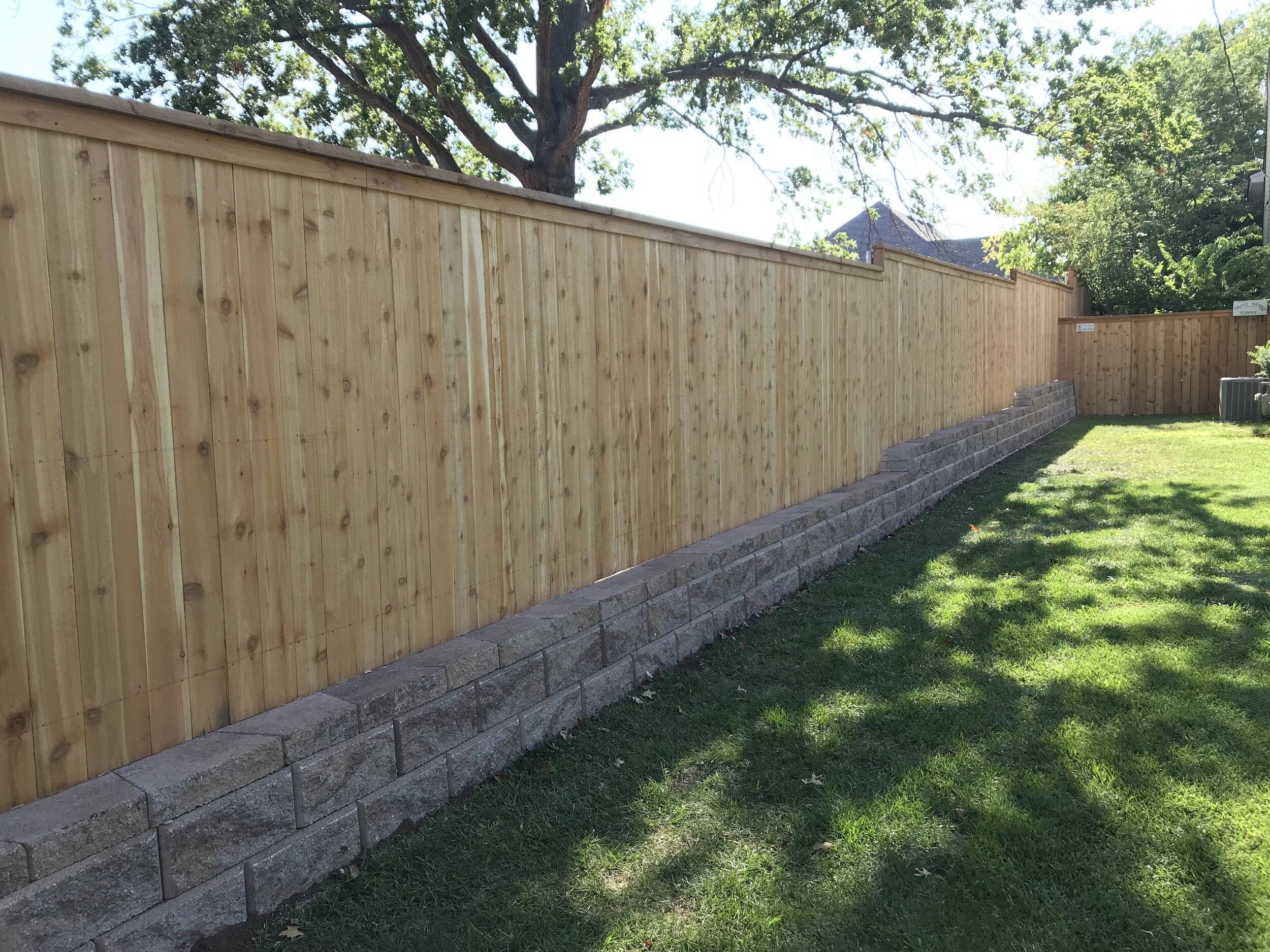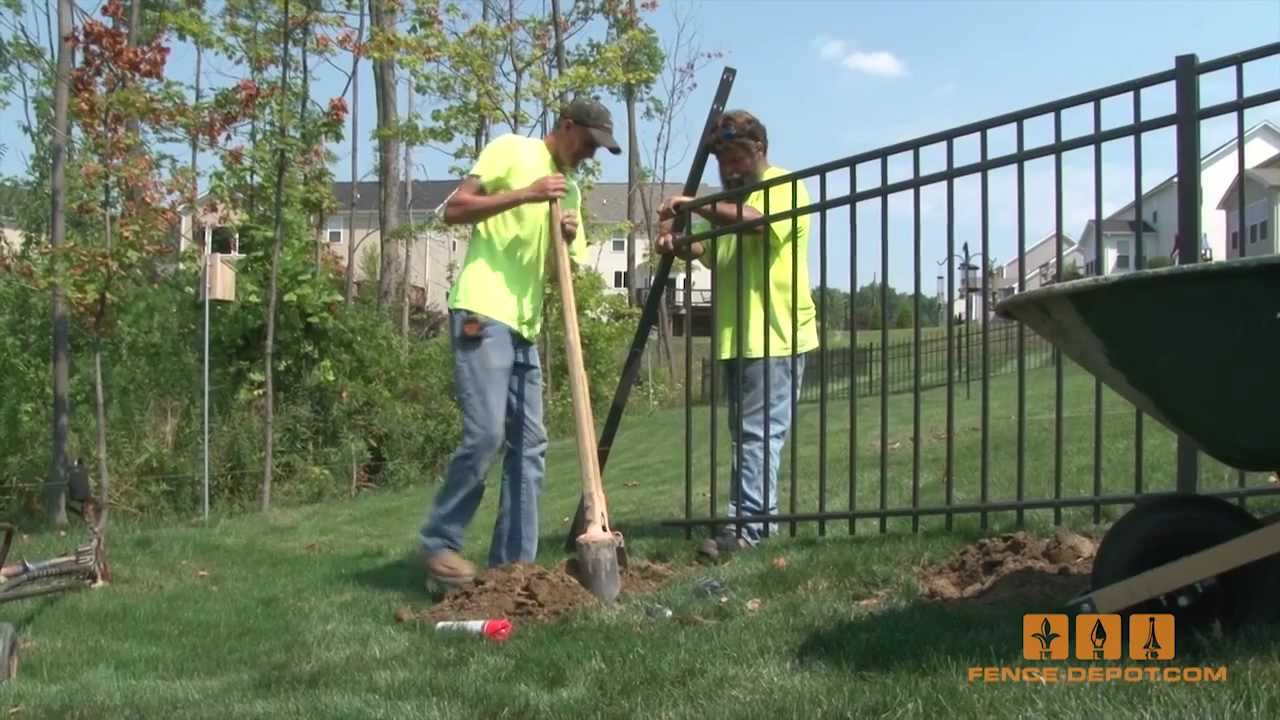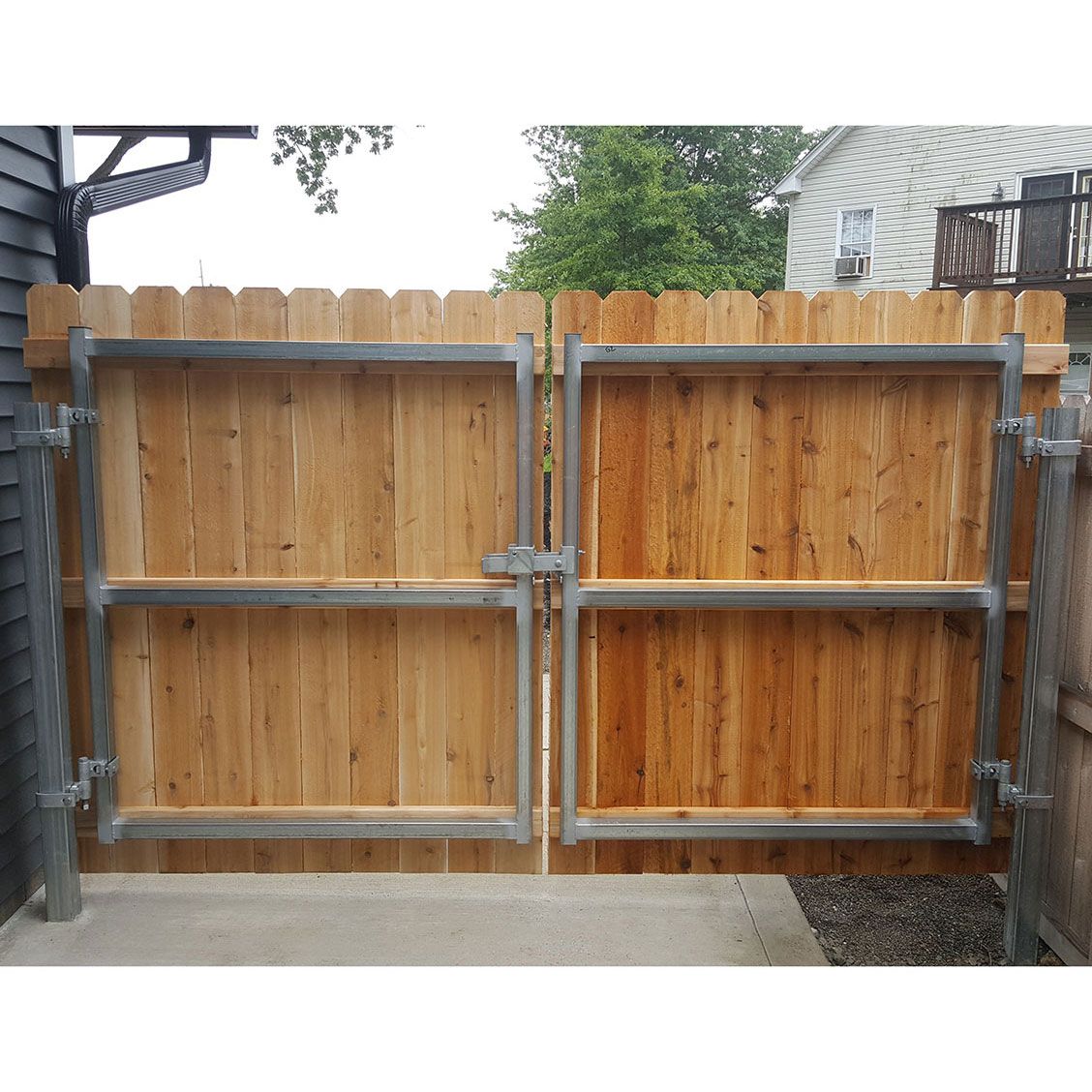
To estimate the cost to install a fence, you can use a board-on-board fence cost calculator. This tool will also give you an idea of the materials needed for your project. Find the nearest house to your home first. Simply click on the Find Your Home button and it will be displayed on the map. Now, you can draw the different segments of the fence. Then, input the dimensions of your project to determine how much the materials will cost per linear foot.
A Board on Board fence can cost anywhere from $3,500 up to $6,500 on average. This includes labor costs of about $1,700 to $3,125 per 6 foot picket. Since tropical hardwoods are harvested from the rainforest, they have the highest cost per linear foot. They can withstand the elements and are therefore the most expensive wood for outdoor projects. This wood is beautiful and dense, but it's also heavy.

A board on board fence requires between fifty to sixty hours to complete. To complete your project, you may need additional pickets. Materials will cost you anywhere from $400-$500. These costs will vary depending on what materials you select and how big your yard is. You can estimate the cost of your fence by using a board on board cost calculator. Remember that these prices can only be an estimate, and are often more than you will actually spend on the fence.
Important is the material for your Board on Board fencing. Although you can install it yourself, it is better to hire a licensed contractor if your skills aren't up to the task. It is possible to end up with a shabby fence that cannot withstand the elements. The lower your budget, the more experience you will have. This can lead to a higher final price. Although the cost of your yard will rise as you progress, it is well worth it for its privacy and beauty.
Prices for a board-on-board fence vary depending on the material used. You will need concrete to place the fence posts on your property. You must place a fence post at 8 feet intervals. You should then divide the length of your fence by two if you wish to create a fence that is eight foot tall. Once you've established the minimum height, you can increase it to four or five.

The cost of a board on board fence is dependent on the length, height, and style of the fence. A board on a curve fence will likely cost twice as much per foot than the material cost. Your budget will also be increased if the fence is more tall or longer. These factors are important to consider when calculating the total cost of your panel fence. Corner posts, for example, will increase your project's cost by three to five percentage.
FAQ
What should I do first in a house renovation?
You must first clear out the clutter outside and inside your home. Next, you need to remove any moldy areas, replace damaged walls, repair leaky pipes, and repaint the entire interior. You will need to clean up the exterior and paint.
Do I need permits to renovate my house?
Yes. You will need permits to start any home renovation project. You will require a building permit as well as a plumbing permit in most cases. A zoning permit may be required depending on what type of construction you are doing.
Is it better for a contractor to hire or a subcontractor to do the job?
Hiring a general contract is typically more costly than hiring subcontractors. General contractors usually have many employees. This means that they charge their clients much more for labor. Subcontractors, on the contrary, hire one employee and charge less per hour.
Are you able to live in a renovated house?
Yes, I can live inside a house while I renovate it.
You can live in a house that is being renovated while you are renovating it. It depends on the length of the construction. If the renovation takes less time than two months, then no, you can still live in your home during construction. You cannot live in your house while the renovation process is ongoing if it lasts more than two years.
You should not live in your house while there is a major building project underway. This is because you could be injured or even killed by falling objects on the construction site. The heavy machinery and noise pollution at the job site can also cause dust and noise pollution.
This is especially true for multi-story houses. In this case, the sound and vibration created by the construction workers might cause severe damage to your property and its contents.
You will have to live in temporary accommodation while your home renovations are underway. This means you won’t have the same amenities as your own home.
While your dryer and washing machine are being repaired, you won't be able use them. You will also have to put up with the smell of paint fumes and other chemicals as well as the loud banging sounds made by the workers.
All these factors can lead to stress and anxiety among you and your family members. It is therefore important to plan ahead so that you don't end up feeling overwhelmed by the situation.
Research is key when you are considering renovating your home. It will save you money and help you avoid costly mistakes.
It is also advisable to seek professional assistance from a reputable contractor so that you can ensure that everything goes smoothly.
How can you avoid being ripped off during renovations to your house?
Knowing what you're paying for is the best way to avoid being scammed. Be sure to read the fine print before you sign any contract. Also, don't sign blank contracts. Always ask for copies of signed contracts.
Statistics
- Rather, allot 10% to 15% for a contingency fund to pay for unexpected construction issues. (kiplinger.com)
- On jumbo loans of more than $636,150, you'll be able to borrow up to 80% of the home's completed value. (kiplinger.com)
- A final payment of, say, 5% to 10% will be due when the space is livable and usable (your contract probably will say "substantial completion"). (kiplinger.com)
- They'll usually lend up to 90% of your home's "as-completed" value, but no more than $424,100 in most locales or $636,150 in high-cost areas. (kiplinger.com)
- ‘The potential added value of a loft conversion, which could create an extra bedroom and ensuite, could be as much as 20 per cent and 15 per cent for a garage conversion.' (realhomes.com)
External Links
How To
Are you renovating the exterior or interior first?
Which one should I first do?
There are many factors to consider when deciding which project to start with. The most common factor when choosing a project is whether it is old or newly built. The condition of the roof, windows and doors, flooring, wiring, and other aspects are all important. The location, style, number of rooms and size of a new building are all important aspects.
The roof is the most important thing to inspect if the building is older. If it looks like the roof could collapse any minute now, you may want to start on the renovation. You can proceed to the next step if the roof is in good condition. Next, examine the windows. The windows should be inspected for damage or dirt before you do anything else. After this, go through the doorways and make sure that they are clean and free from debris. Then, if everything seems okay, you can begin working on the floors. Be sure to ensure that the flooring is stable and strong so that you can walk on it without slipping. After you have completed these steps, you can move on the walls. Take a look at the walls to see if any cracks or damage are present. If the wall is in good condition, you can move on to the next step. The ceiling can be finished after the walls have been examined. The ceiling should be inspected to make sure it can support any weight that you might place on it. If everything checks out, then you can move forward with your renovation.
If the building was newly built, you'd probably start with its exterior. Start by looking at the outside. Is it clean? Is it free from cracks? Does it look great? You should fix any exterior problems. You don’t want to make your home look bad. Next, you need to inspect the foundation. If the foundation looks weak, then you should repair it. You should also inspect the driveway. It should be level and smooth. If it isn't, then you should probably fix it. When checking the driveway, also check the sidewalk. If the sidewalk is uneven, it should be replaced.
These areas should be checked before you move on to the inside. The kitchen is the first thing you should inspect. Is it clean and well-maintained? It should be cleaned up if it's messy. Next, make sure to inspect the appliances. The appliances should be in good working order. If they aren’t in great shape, then either you buy new ones or replace them. Check the cabinets after this. If the cabinets are stained, or have been scratched, you can probably paint them. You can then move on to the bathroom if they are in good condition. You should inspect the toilet here. If it leaks, it is time to get a new one. If it's just dirty, then you should probably wash it. Next, check out all the fixtures. Make sure they're clean. If they are dirty, then you should definitely clean them. Finally, you should inspect the countertops. Repainting countertops is advisable if they have cracked or are chipped. Sealant should be used if the surfaces are smooth and shiny.
The last step is to check the furniture. Check that nothing is damaged or missing. You should find what is missing if it is not there. If something is broken, then you should probably repair it. After you've checked everything, it is possible to move outside and complete the job.